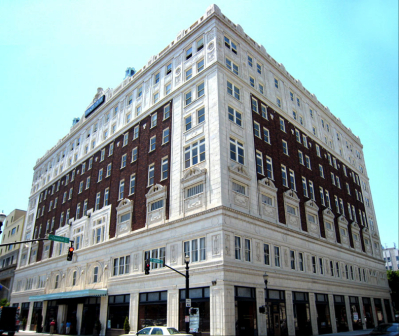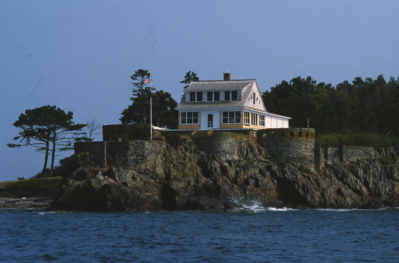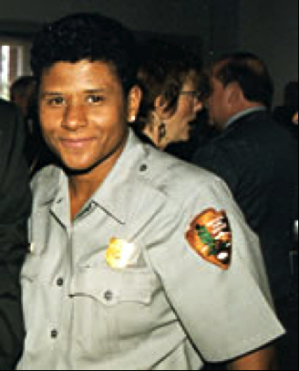
Diversity in parks is work in progress
America is the world’s melting pot. People come together in the United States to represent cultures from all over the world and, over time, the population of this nation is also changing.
A 2011 study from the U.S. Bureau of Census forecast that, by 2050, the Hispanic population will rise to 29 percent, the African American population will increase to 9 percent, and non-Hispanic whites will become only 47 percent of the population.
The workforce and programs of the National Park Service (NPS), a governmental agency that cares for the nation’s parks, should reflect this changing population to best relate to the people of the nation that it is trying to represent. Recent efforts with the NPS have made this their mission.
The official statement made by the NPS on workforce diversity is as follows: “We want to accomplish a workforce that is representative of the American people … we must continue to move vigorously toward a workforce that reflects the diversity of American society at large and employs the best talents of all groups. This is good business for America and it is good business for the National Park Service.”
This statement embodies the operation of the Cultural Resources Diversity Program (CRDP), a program overseen by the National Park Service that develops approaches to diversify the professional workforce within the NPS. Currently, 80 percent of the workforce represents the white male population. Only 5 percent of workers are Hispanic, 10 percent black, 2 percent Asian, and 3 percent Indian. A stunning minority of workers are female (37 percent).
A supervisor of this diversity program, Brian Joyner, recognizes the problem this lack of diversity poses, but defends the NPS.
“The diversity initiative is a sustained effort on behalf of the NPS. The historic issue about lack of racial and ethnic workers isn’t an issue we can solve overnight, and we’re not going to hire our way out of it. Instead of targeting workers of a specific race, we target talent to find the most qualified people for the nature of the job. We want to find workers that are the most passionate about the organization,” Joyner stated.
Critics fear that this lack of diversity will lead to a downfall of the NPS, because the population of the country is changing and visitors will no longer be able to relate to the parks, ultimately ridding the public’s interest in the NPS.
Luis Hoyos, a co-chair for the American Latino Heritage Initiative under the park system, said it was possible the value of the NPS could diminish.
“In regional offices, there’s usually a good mix of people with minorities represented frequently. Still, if the national park system doesn’t do a better job nationally to represent the minorities of the population, less visitors will be attracted to the parks and ultimately the importance of the park system to America could be compromised.”
Joyner shows a different view, however. The way of the park system is changing and he has optimism in the CRDP’s approach to attracting new visitors.
“More parks and programs are directly in the areas where people live. More attractions are opening in urban areas, basically in people’s backyards, which is why we have to think differently about who the audience is. Instead of the family making a weekend trip to Yosemite National Park, it’s the mom’s club who takes a four-mile run to Valley Forge. Concerning the issue of diversity, there’s a historic racial and ethnic component to it,” Joyner stated.
“We focus more on how we engage people, where we engage people, and how we expect the visitor experience to be. In part, the issues we’ve had before to attract people aren’t the issues we need to focus on now,” Joyner continued. “We need to try to hire people who can relate to and represent the types of visitors we’re trying to attract. We’ve had incredible hiring efforts in order to increase the diversity in our workforce.”
Workforce diversity isn’t the only issue regarding diversity that the NPS is facing. There has been much criticism concerning the historic sites within the parks service.
Traditionally, many of these places told the stories of European descent. It wasn’t until the 1970s when the NPS started efforts to include more sites to preserve the histories of underrepresented groups such as Native Americans, African Americans, Asian Americans and Hispanics.
Both the National Register of Historic Places (NHRP) and the National Historic Landmarks Program (NHLP), two federal designation programs overseen by the NPS, have focused on these diversity issues, with specific projects announced just recently to further these efforts.
 |
The Henry Clay Hotel in Louisville to commemorate LGBT heritage is one project that will be funded by the newly allocated $500,000 grant to the National Register of Historic Places. |
The National Register of Historic Places has more than 90,000 listed sites that represent communities across the nation, and on Oct. 2, 2014, $500,000 in new funds were announced to help fund 13 new projects, representing African American, American Latino, LGBT, Native American, and Asian American communities.
“They were more great projects that were nominated, but there was a limited source of money,” Carol Shull, the NHRP official who decides on the eligibility of nominated properties, said. “There’s a real effort to try to increase the diversity of the register, but there’s a hard time because there’s not a lot of funding for the National Register of Historic Places in the national budget. Despite this, there’s a real push to try to recognize more cultural historic resources that may be underrepresented.”
Shull first accredited this push to American citizens, who are responsible for nominating new listings, but explained some ways the National Register helps encourage the push.
“Heritage initiatives are projects exploring ways in which the legacy of underrepresented groups can be recognized and preserved. There are programs specifically for different minority groups – American Latino, Asian Pacific Islander, LGBT, et cetera – that help study the histories to include them in both the National Register and the National Landmarks Program,” Shull stated.
The National Historic Landmarks Program (NHLP) is a division of the National Register, with 2,000 sites significant to the history of the entire country. On Sept. 30, 2014, the designation for nine new sites that highlight the diversity of America was announced.
 |
Eagle Island, Admiral Robert E. Peary’s summer home in Harpswell, Maine, is just one of the nine new historic landmarks announced by the National Historic Landmarks Program. |
Cynthia Walton, who works in the Southeast Division of the NHLP, commended this effort to increase the amount of sites, but still, called for more action.
“The new sites are great, but still, we need to try to identify more properties to identify with the underrepresented groups; American Latino, Pacific Islander, women, LGBT. There is still inequality, and we need to find more of their stories to be told,” she explained.


Comments are Closed